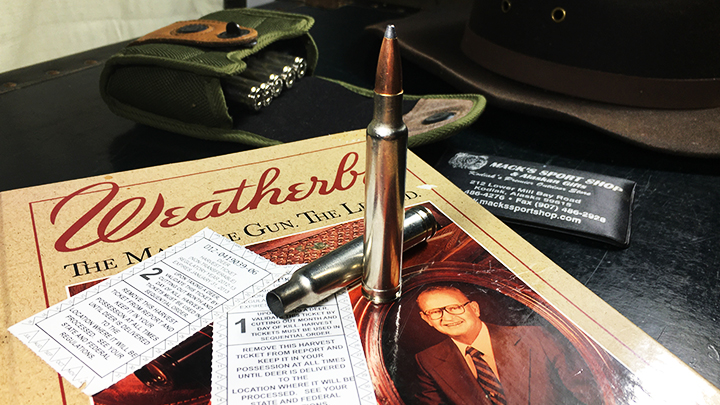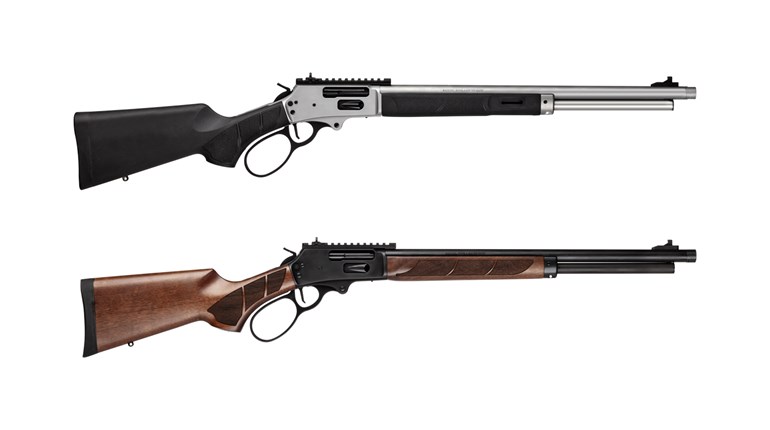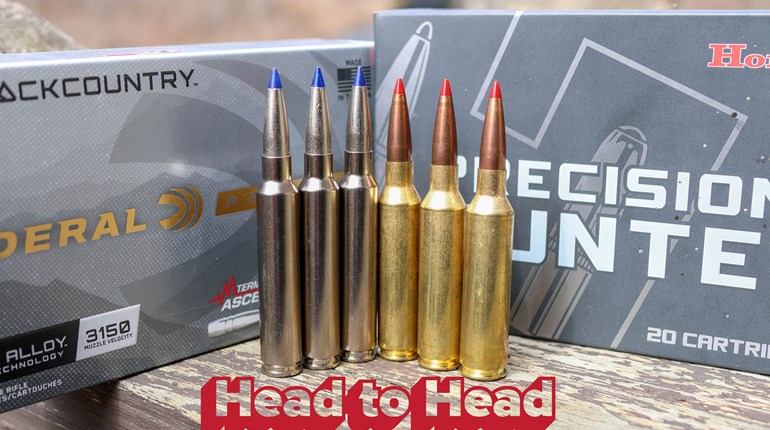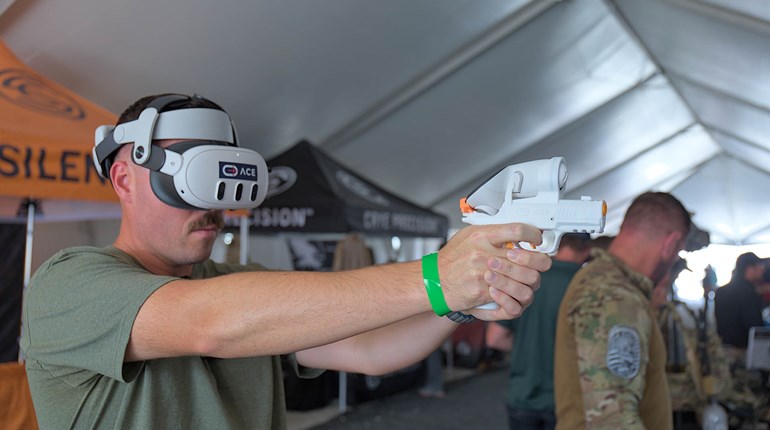
I will never forget that early December day. With work and college obligations already addressed, I visited a small, out-of-the-way gun shop in Luray, Va., to celebrate my 18th birthday as only a rifleman knows how—the purchase of my first long gun. In this case, it was a flashy Remington Model 700 BDL SS DM in .300 Weatherby Magnum.
A longtime visitor at the rural business, the aging owner had willingly set aside the rifle, waiting for day I transitioned from teenager to adult—and of legal age to purchase a long arm. Now it was finally the long-awaited time to take possession of it. With the paperwork complete and approval attained, I disembarked with the rifle that’d do the heavy lifting in fields far and wide for more than two decades. I never regretted the choice of rifle or cartridge. From Colorado elk and Montana antelope to Virginia whitetails and various nuisance species, it handled them all with aplomb. Outside of a shotgun and rimfire, for a lengthy stint it was all I had and, frankly, needed.

A Study in Ballistics

An avid reader of firearm and outdoor literature, as well as one enamored with ballistics charts and cartridge histories in general, the decision wasn’t made haphazardly. Weatherby’s .300 was the quintessential “all-around rifle.” Having grown up around myriad hunters clutching rifles in the ubiquitous cartridges—.243 Winchester, .270 Winchester, .308 Winchester, and .30-06 Springfield—and having used them myself, I understood well what they were capable of. But I craved more performance and something exotic (at least in my neck of the woods). The former was Roy Weatherby’s philosophy, too.
Weatherby understood that high-velocity cartridges offered superior game-stopping performance in the field, as the terminal ballistics (including shock) they produced would result in a swifter, more humane death—even with marginal hits. Thus, he created a series of cartridges in top-of-class velocities. Although the .300 Wby. Mag. wasn’t the first—it debuted in 1944—it was, and still is, the most popular among the series. There’s a good reason why, too.

Until the standardization of the .30-378 Wby. Mag. (1998) and introduction of the .300 Remington Ultra Magnum a year later, the .300 Wby. Mag. was the undisputed champ of .30-calibur ballistics—outside of proprietary and wildcat cartridges, of course. It edged out the .300 Winchester Magnum, which was introduced in 1963, but that difference was lessened through technological advancements in ammunition—namely Hornady Superformance. In non-Superformance loads, the .300 Wby. Mag. still outperforms the .300 Win. Mag. slightly, but bests the .30-06 Springfield by a lot.
According to SAAMI, when loaded with a 180-grain bullet, the .300 Wby. Mag. has a mean instrumental velocity of 3185 fps at 15 feet. Compare that to the 2950 and 2690 fps for the .300 Win. Mag. and .30-06 Sprg., respectively, and you see why the cartridge gained a sizeable following quickly. Lighter projectiles can be pushed notably faster, and the cartridge easily handles bullets in the 200-grain-plus weight as well. The additional velocity that comes from using lightweight bullets reduces time to target and provides a flatter trajectory. Moreover, the projectile arrives on target with additional velocity, helping ensure reliable upset and increasing energy.

For Weatherby to achieve the desired boost in performance required “thinking outside of the box.” He employed an improved, full-length .300 H&H Mag. case, which featured his signature double-radius shoulder. With a maximum case length of 2.825 inches and maximum cartridge overall length (C.O.L.) of 3.560 inches, the round requires a magnum-length action—something its primary competition, the .300 Win. Mag., doesn’t. But that additional case space enables it to hold large volumes of slow-burning propellant for top speeds., as well as heavy, long-for-caliber bullets that rob propellant space. According to Nosler Reloading Guide 8, case capacity exceeds 90 grains of water. As can be expected, 26-inch barrels are desirable for complete consumption of propellant.
Outside of the requirement for a magnum-length action, the most damning attribute—at least in some shooter’s eyes—is the belted case. Consistent with nigh all Weatherby cartridges, the case has the belt for headspacing. One must remember, though, that belts were a sign of the era and used, even if unnecessary, on magnum cartridges. In a way, this matches the high brass used on magnum shotshells with plastic hulls. Nonetheless, belted cases can suffer from reduced life, though through neck sizing and case care the useful life can be extended. Cases are available from Weatherby (made by Norma), Norma (its own line), Hornady and Nosler.
Availability
Ammunition for the chambering is available from Weatherby, Norma, Barnes, Hornady, Swift, Nosler, HSM and Remington, to name a few; however, most loads feature stout, high-weight-retention bullets in the 165- to 210-grain weights. Included are: Barnes Tipped Triple-Shock X Bullet (TTSX), Norma Oryx, Nosler Partition, AccuBond and AccuBond LR, Swift Scirocco II, and Hornady ELD-X and GMX. These are suitable for all big-game species that you’ll pursue with the cartridge. If less weight retention is desired, opt for the jacketed soft point (JSP), Hornady InterLock, or Nosler Ballistic Tip as loaded by Weatherby or HSM’s Berger VLD option.

Still, maximum versatility requires handloading. Doing so gives you access to bullets not available in factory loads, as well as lighter weights. I frequently handloaded 150-grain SST and Speer 150-grain Hot-Cor when pursuing deer-sized game in open areas; however, less-than-perfect bullet placement will result in significant loss of meat. Avoid shoulder shots. I also loaded projectiles in the 110- to 125-grain weights for groundhogs, coyotes, and prairie dogs.

Remington, Winchester, Sako and Ruger infrequently offered short runs of rifles in .300 Wby. Mag. These appear from time to time on the secondhand market, as do semi-custom and custom rifles. My most recent .300 Wby. Mag. acquisition was a custom job built on a Winchester Model 70 action, that I got for a song at a local gun shop.

Weatherby is still the primary supplier of rifles in its namesake .300. You’ll find many of these high-quality rifles on the used market as well, as many shooters simply don’t put in the time and effort to familiarize themselves with the rifles and build tolerance to the .300’s recoil, which can be jolting—especially lightweight variants. Used Weatherby rifles are great values, as seldom do the larger calibers (including the .300) truly get “shot out,” and they’re exceptionally well made. A discerning eye can identify signs of wear and abuse; if it’s questionable, move on. As for new Weatherbys, there’s an immense selection of Mark Vs and Vanguards from which to choose.

One thing to take into consideration when purchasing a .300 Wby. Mag. rifle is free bore. In Weatherby rifles (be it the Mark V or Vanguard series), there’s longer-than-normal free bore to help attain high velocities without an undue spike in pressure. Many non-Weatherby products, semi-custom, and custom rifles—including my Remington—doesn’t, so loads must be worked up slowly, all while watching for signs of excessive pressure. Conversely, absent the lengthened leade, non-Weatherby rifles make it easier to experiment with C.O.L. and yet still work in magazines—something difficult in Weatherby rifles.
Also, you want to ensure that your rifle has sufficient twist to stabilize the bullets you desire to shoot. Early Weatherby rifles in .300 Wby. Mag. had twist rates as slow as 1:12-inches, which is insufficient to handle modern, heavy, streamlined bullets. Most companies (and newer Weatherbys) use the versatile 1:10-inches or something faster, so you’ll be good to go with most projectiles—especially those designed for hunting.

What happened to the Remington? After two decades of dedicated use in the fields and frequent, long sessions on the range, the rifle succumbed to extensive use. Accuracy began to fade, so, on a whim, I had it re-barreled for another caliber, which was a mistake. I sold the rifle shortly thereafter. Fortunately, I found another sweetheart in the aforementioned custom Model 70, which rekindled my interest in the .300 Wby. Mag. I will never be without one again, because after more than 70 years, it’s arguably still the best single-gun option for hunting big game worldwide. It certainly gets my vote.



































